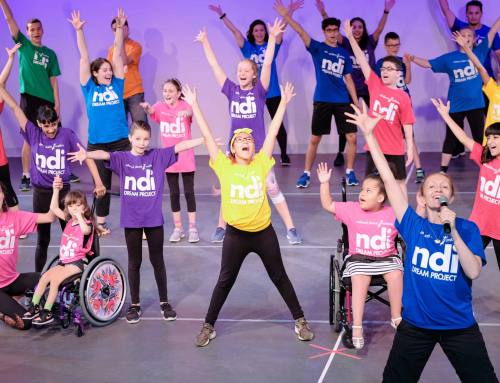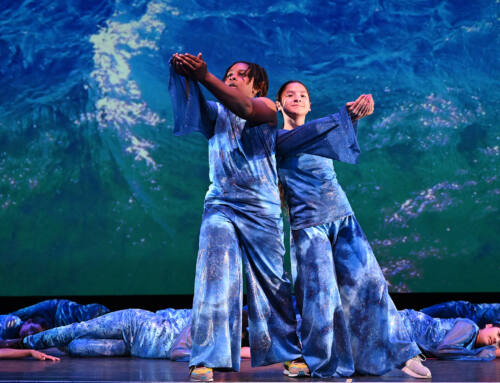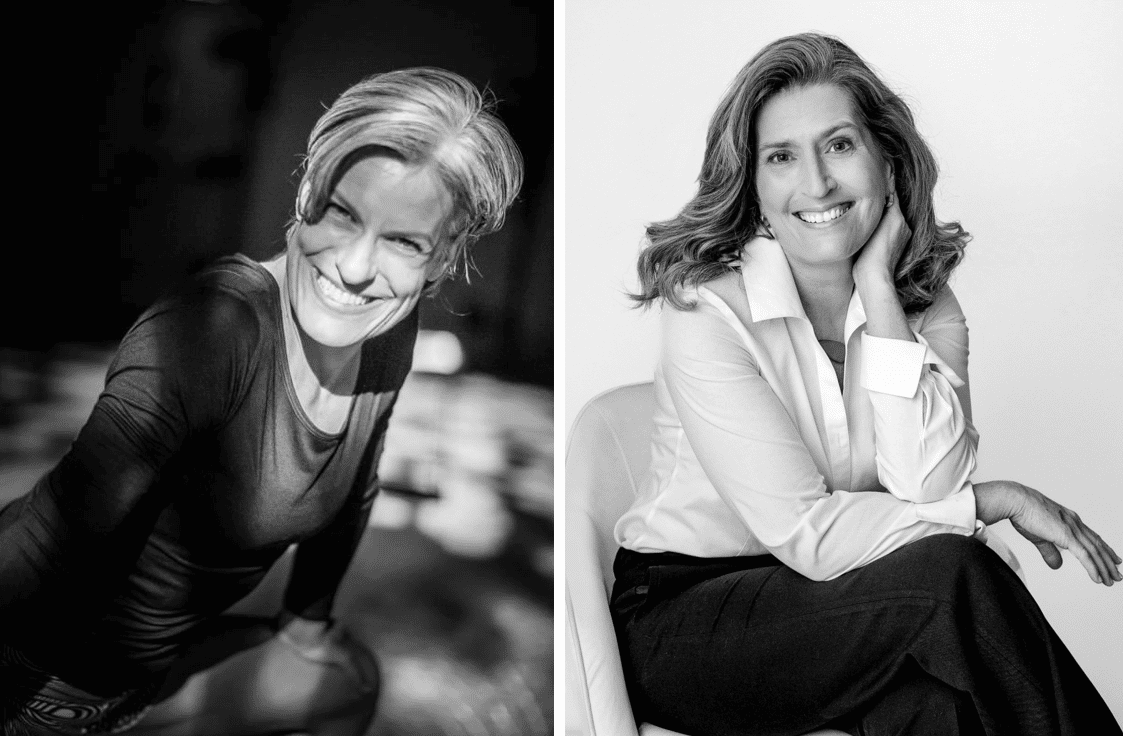
“The fact that we have the ability to bring all of us together will be so special,” DREAM alum Avery Roberts told me. “And getting to catch up with everyone in-person will be just another memory that we can add on to all the memories we already have.”
And as for the rest of the week? “We’re going to make a show!” beams Gayner.
National Dance Institute (NDI) was established in 1976 by the renowned New York City Ballet principal dancer Jacques D’Amboise. It was founded on the belief that dance and arts education should be inclusive and accessible to all children – a principle which is reflected by the ethos of the DREAM Project.
Although DREAM was officially launched in 2014, its origins date back to 1998, when Gayner (now NDI’s Artistic Director) and Ferro (a Pediatric Physical Therapist), collaborated on an NDI program for children with disabilities at PS199 – a public school on the West Side of Manhattan. Alongside Aileen Barry (NDI’s Senior Director of Education and Outreach), they crafted a program which enabled students with varying strengths, abilities, and movement potentials to participate in collective pieces of choreography.
The classes at PS199 – still ongoing with Gayner as the teaching artist – became a cornerstone. And in 2014, when NDI opened a new center in Harlem, the opportunity arose to extend the program to a wider audience, marking the beginning of DREAM (Dancers Realize Excellence through Arts and Movement).
As a one-of-a-kind initiative, it soon attracted a wave of interest from children and families alike, and even led to one family driving three hours each way for their daughter, a wheelchair user, to be a part of the inaugural event. Ten years on, DREAM is continuing to go from strength to strength, with a total of 46 children (including 20 first-timers) enrolling in this year’s winter camp.
In the program, children with disabilities are partnered with age-matched peers from NDI’s Advanced Teams. They work together on the routines throughout the week – to the soundtrack of a range of live music – ending with the group performance on the final day. “The magic is in inclusion. The magic is in partnership,” Ferro says, “It is not one group and another group. It is we as a group.”
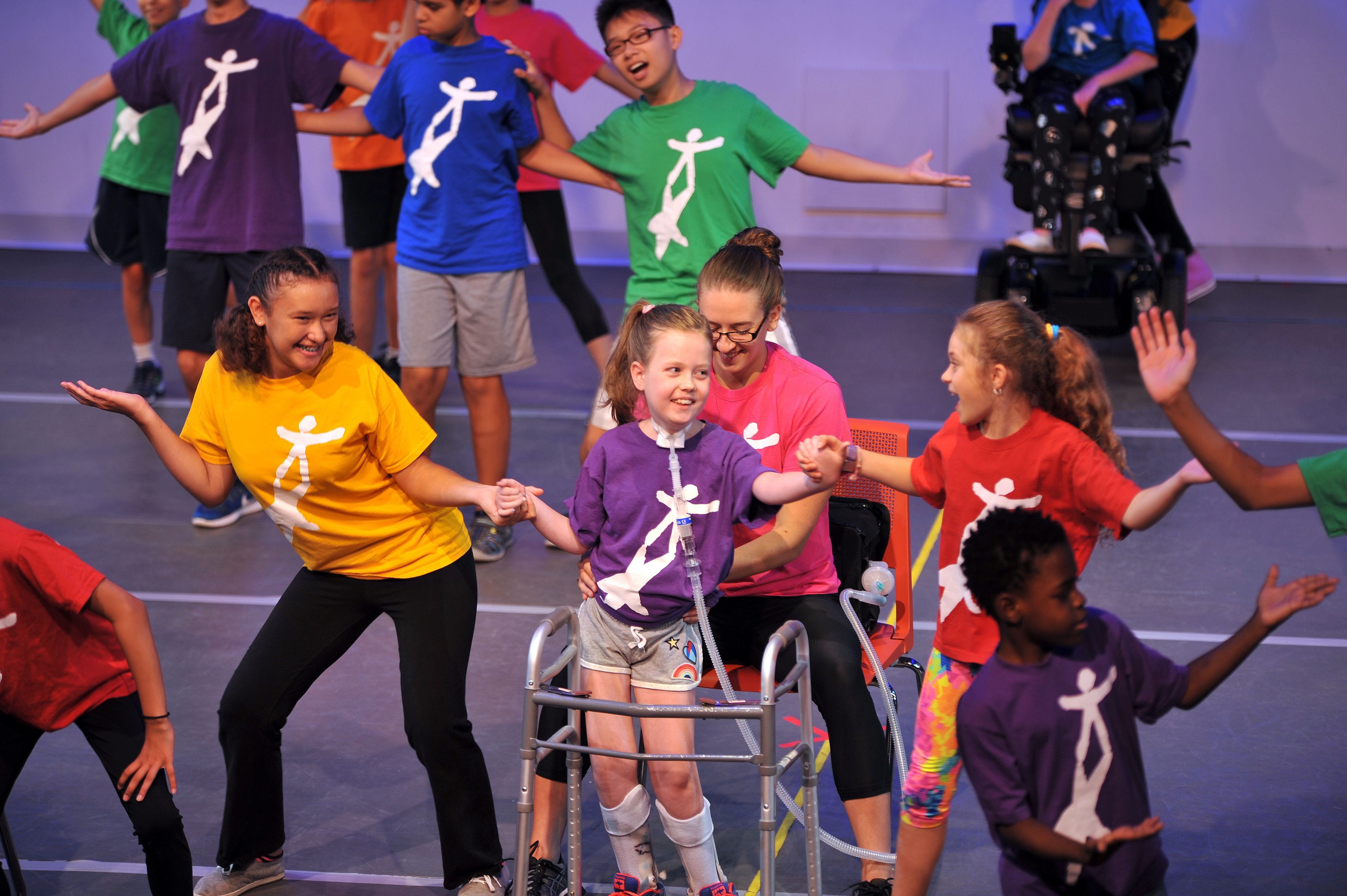
Ferro goes on to recall a memorable example from 2014. A young participant’s rare diagnosis physically limited her to driving a wheelchair with her finger and making facial expressions – something which they were able to create dances and “translations of movement” from.
“We were trying to figure out some choreography that really highlighted her in particular,” she explains. “I ran to the back of the bleachers in the studio and then called out to her to do something, you know, give me a ‘yes’… and you could see it from the back.
“Then Kay took it and [it became] a translation for all of the children. If you were to move your eyebrows up and down, how could you do that with your arms? And what would that look like? It was an a-ha moment for Kay and I – that movement is what was sourcing the choreography.”
Gayner adds that, while they are both always actively suggesting and facilitating ideas for different translations, they are always impressed by how the dancers unleash their creativity and brainstorm their own ideas throughout the week. “They come up with things, ideas for choreography or steps or phrases that are way better than anything I could imagine. That moment when you start to feel that shift happening in the room, I think is one of my favorite pieces of every workshop.”
Certain choreography can also be used as motivation to help the dancers from a physical therapy standpoint: “If you have low core tone, just doing sit-ups – not so much fun. But being lifted by your partners and having to pull your knees up to your shoulders while you’re in the air… a lot of fun!”
The physical benefits of DREAM are just as evident as the social benefits. A 2018 research survey of DREAM participant’s parents, said 46% had identified improvements with “skills such as posture, endurance, transfers and upper extremity use”. A further 26% reported that their children had developed better sleeping patterns.
“After one of the DREAMs, a mother came directly up to me and said: ‘She slept’,” McConlogue says. “So I was like: ‘Oh, that’s great’. And she said: ‘No, you don’t understand. She doesn’t sleep.’
“Her diagnosis was associated with essentially, at any given time, 20 to 30 minutes of sleep. Then awake for hours, and then maybe 20-30 minutes of sleep. [Her mother] said for the first time that she could remember in an eternity, this particular child had slept for four hours straight.”

Since participating in the program, the young dancer has gone on to achieve several feats, including becoming the first wheelchair user to perform at the iconic Radio City Music Hall, and being one of the first few wheelchair users to perform on a national live television production (for NBC’s Annie Live!). “I always give DREAM credit for where I am now,” she says. “It just gave me the strength and the empowerment to keep going. and taught me to never let barriers kind of get in your way of pursuing what you’re passionate for.”
Yet alongside the positive and sometimes life-changing impacts of the program, it is also important to contextualize relatively small-scale schemes like this one against the broader societal and industry landscape. Roberts says that while DREAM is a beacon for inclusivity, it remains one of very few good examples for members of the disabled community in the dance and entertainment world.
“There are many failures, unfortunately, that come with the entertainment world today – just because education around inclusivity and how to do it right is very low. For me specifically, being a wheelchair user, there’s a huge lack of accessibility as well.
“There’s a whole other layer with everything – not only these experiences – but even just to go out and go to a family member’s house. You have to really figure out, OK, do I have a caregiver to go with me or is it accessible? There’s a whole other layer to your life that come with having a disability, so a lot of these experiences are very eye opening.”
And with regards to the program, “DREAM is so rare,” she says. “It’s a hidden treasure, and I think that when you do find it, that’s when you’re like, OK, there is a place for me in this entertainment world.”
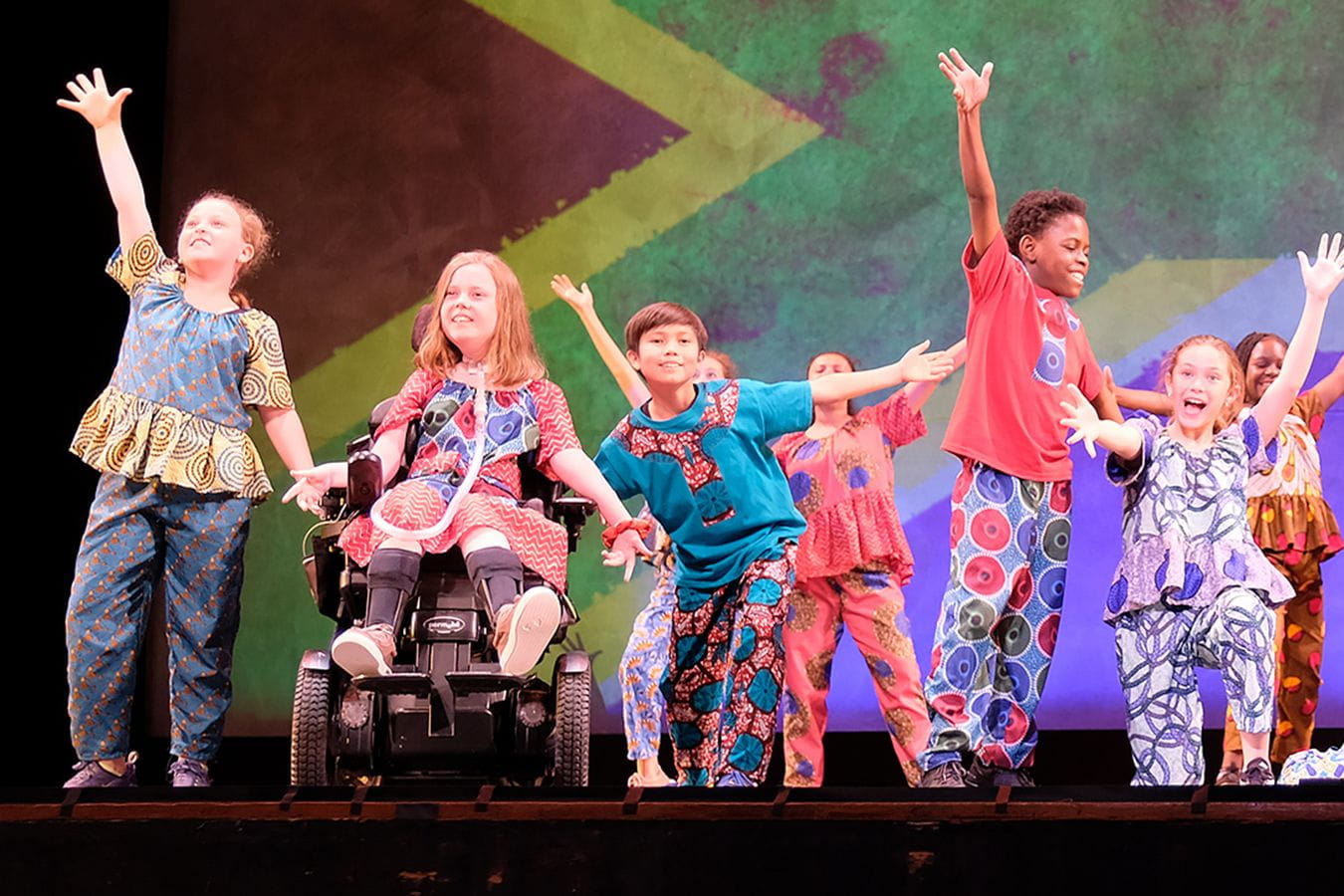
The DREAM project rightfully prides itself on “inclusion done right” but, acknowledging these wider failings of the entertainment industry, Ferro echoes Roberts’ assertion that there is so much more progress that needs to be made.“We have to do better. We must do better,” she says. “It’s not just up to the children to carry that torch. We have to be right alongside them and light the way and support anybody in the Community that’s interested in inclusive community-based programming.”
“It is really stunning how much needs to change in the entertainment world and and out in the world,” Gayner follows on. “The saying in the disability community ‘nothing about us without us’ is so profound because I think a lot of people are scurrying around trying to check a box and say ‘yes, we’re inclusive’, without bringing in people to bring their lived experiences into how decisions are made.
“It’s not just saying ‘yes, we are inclusive and everyone is welcome’. It’s also a much deeper process to explore: What does belonging really look like? And what does artistry within this art form look like?”
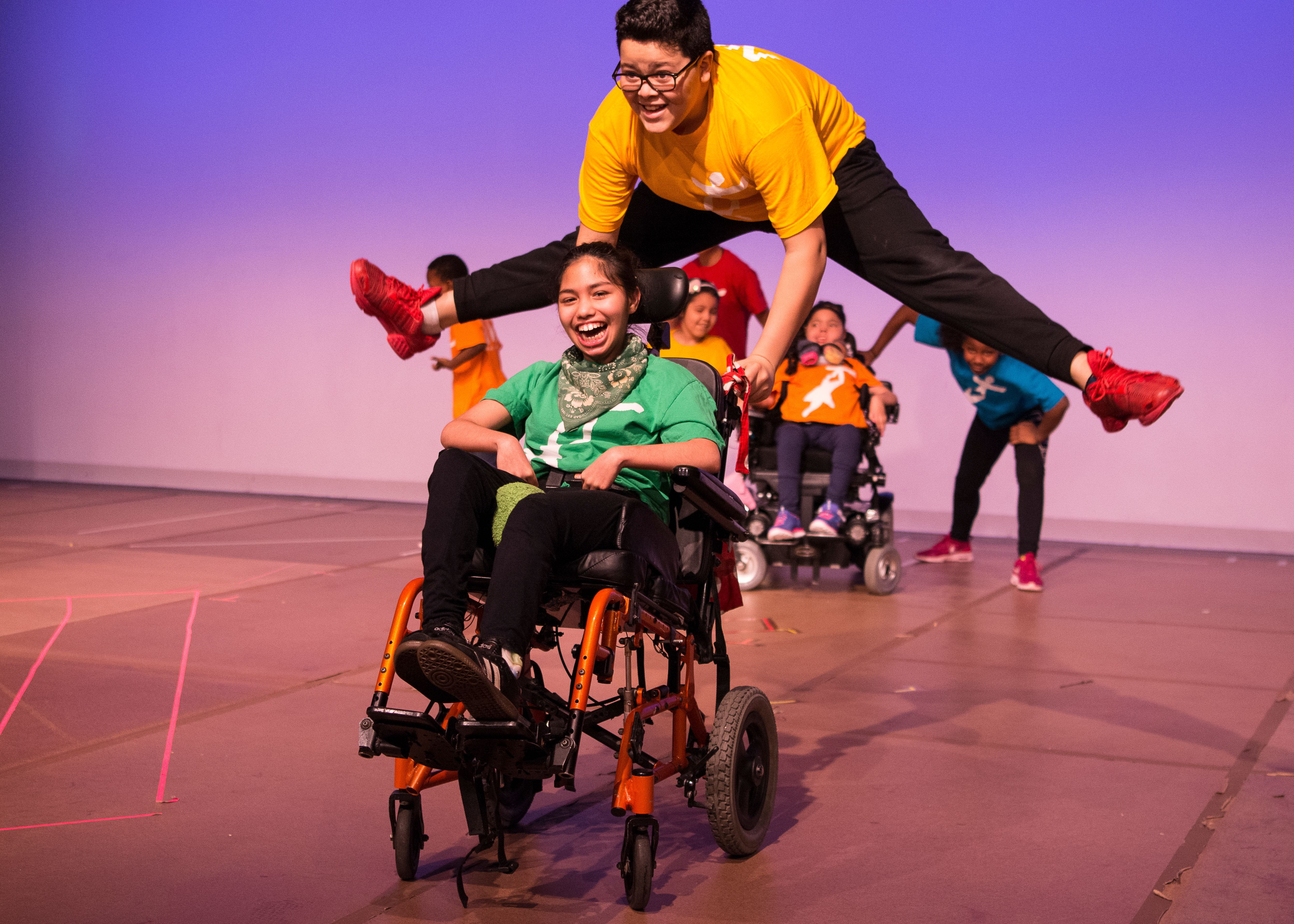
As for the future of DREAM, the aim is to expand its impact – including by continuing their customized teacher training program and potentially bringing back some of the program’s alumni as teaching artists in the future. They also hope to continue to “fan the flame of all of those children who are out there advocating in whatever communities they are in, so that [similar initiatives] aren’t something that you can only find in small places or in pockets hidden here and there”. In Gayner’s words, the aim for the next ten years is quite simply “for DREAM not to be a rare gem”
“Full disclosure,” Ferro tells me, “this is probably the first interview I’ve gotten through without crying. She says it is “such an honor” to be part of the program and that seeing its real-world impact is “so deep to why we believed in this in the first place.”
“Never have we ever been able to describe the fact that in one room at any given time, you have an incredible range of physical, social, emotional, and intellectual ability. And it’s not something that should be glossed over. It’s something that should be really highlighted.”
The Power of Dance
“I think dance is how we know and realize that we’re human.
“The arts are a mirror and a window. We understand ourselves better, but we also learn so much more about the world around us and dance and the body and embodying.”
— Kay Gayner
“I think that dance is how you can express any message. I’m a disability and rare disease advocate and I think I view my place in the entertainment world and on a stage as adding to that and making a meaningful impact through that.
“When you picture a dancer you picture them to be tall and skinny and beautiful, and I think that everyone’s beautiful and I think that you don’t have to be that preconceived notion. I think everyone can dance.”
— Avery Roberts
“I think that the reason everyone should dance or recognize the importance of dance is watching the dancer. What that means to you, what it does to you as the person watching it. But really recognizing what it does for the dancer, how they’re dancing, what they’re trying to tell you. I always say they’re telling me their story. What is their story? What do they want me to know in that moment with that music in that dance? And I think that’s magic.
“Dance, from its earliest roots is storytelling, communication, and community. Probably now more than ever, we need that.”
— Dr. Agnes McConlogue Ferro


